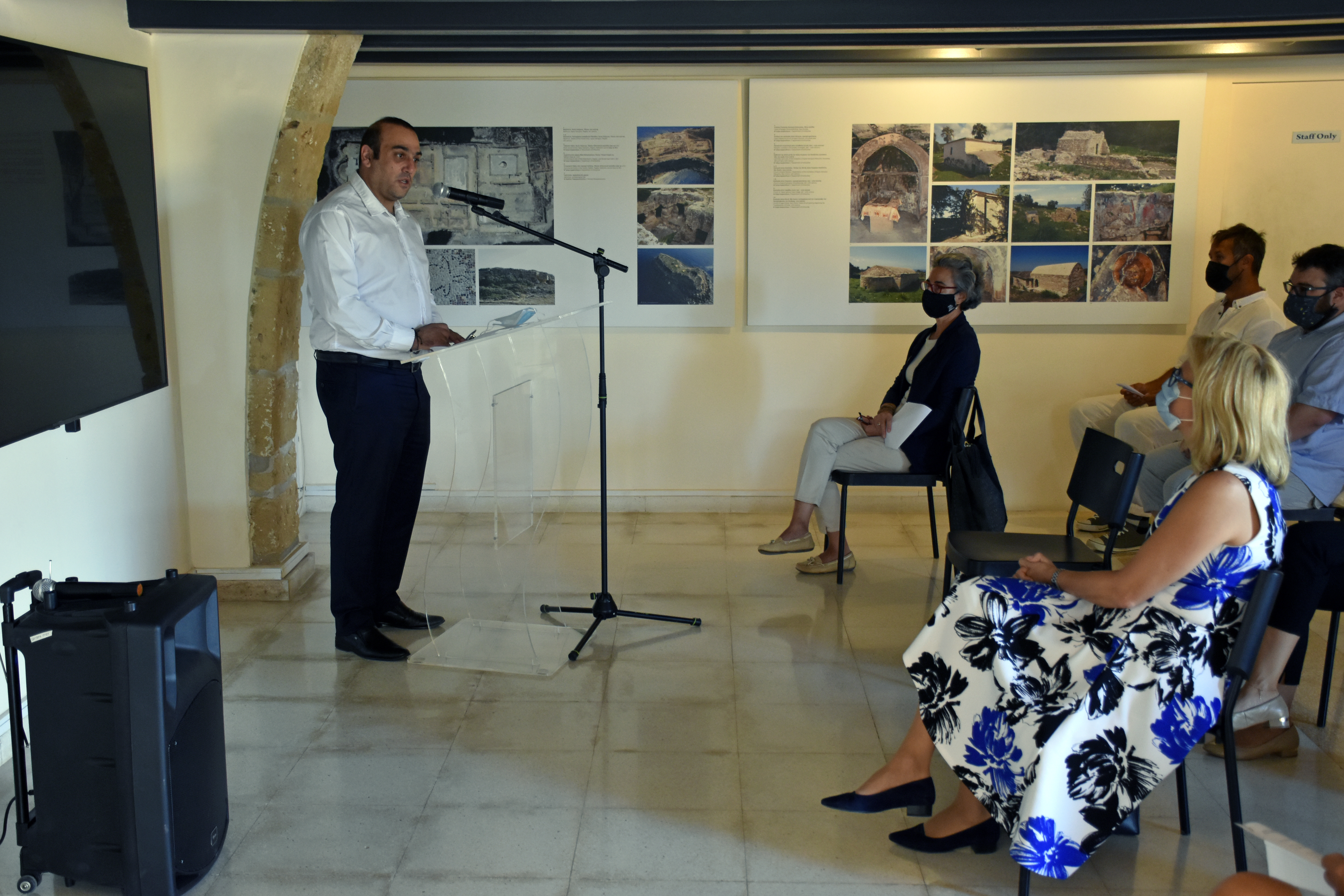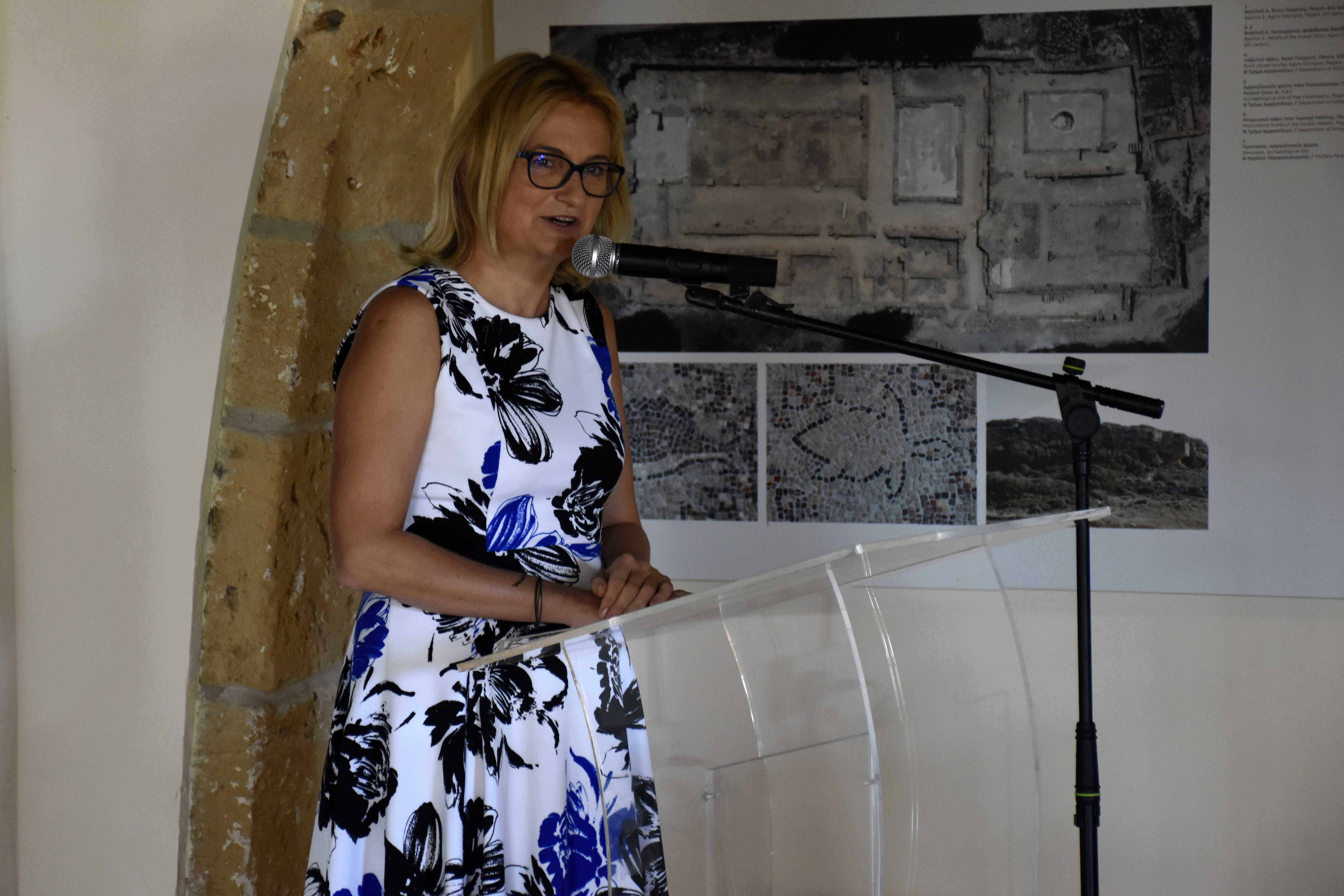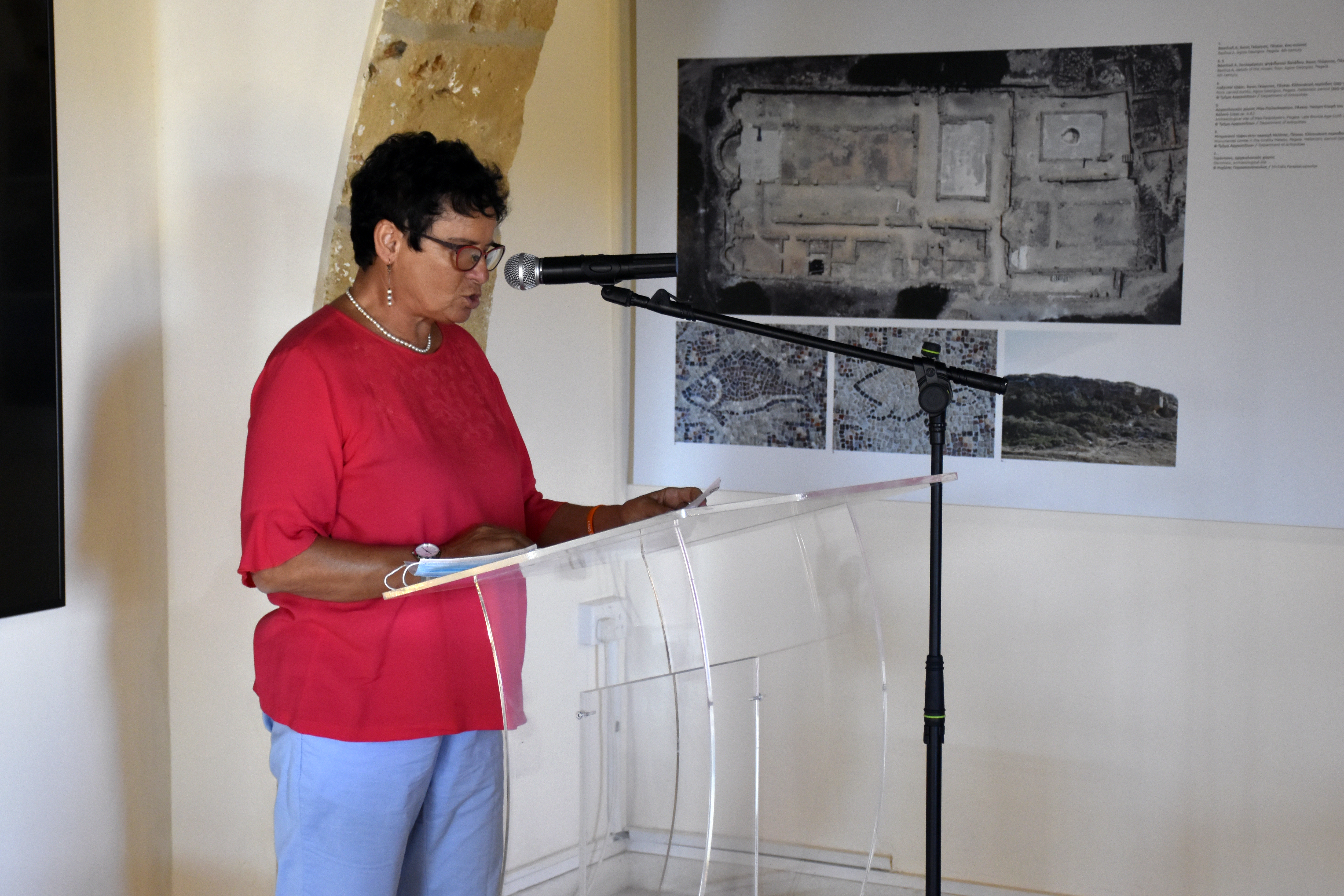55 years of Polish archaeological activity (1965-2020) of the University of Warsaw and Krakow Jagiellonian University in Paphos, UNESCO world heritage site.
15.10.2020
This year we celebrate the 55 years of Polish archaeological activity in Nea Paphos, for many years the capital of Hellenistic and Roman Cyprus, whose monuments are on the UNESCO world heritage list.

On this occasion, on October 15 2020, the Minister of Transport, Communications and Works of the Republic of Cyprus, Yannis Karousos, paid a visit to the archaeological site of Kato Paphos. The minister got acquainted with the discoveries of archaeologists from the University of Warsaw and the Jagiellonian University, met with the Ambassador of the Republic of Poland in Cyprus Mrs Irena Lichnerowicz-Augustyn, professor E.Papuci-Władyka and the members of the Polish mission. Unfortunately, due to the epidemiological restrictions in force, the arrival of the representatives of the Polish universities was not feasible. The speeches of the director of the Center of Mediterranean Archeology of the University of Warsaw prof. Artur Obłuski, vice-dean of the Faculty of History of the Jagiellonian University prof. Judyta Rodzińska-Nowak and dean of the Faculty of Geodesy and Cartography of the Warsaw University of Technology prof. J.Walo were read by the Polish scientists present on the spot.
The event was organized by the Department of Antiques of the Ministry of Transport, Communications and Works of the Republic of Cyprus represented by dr Marina Solomidou Ieronymidou and professor Ewdoksia Papuci-Władyka from the Institute of Archeology of the Jagiellonian University, with the support of the Polish Embassy in Nicosia.
Polish activity started in 1965 when the mission of the Polish Centre of Mediterranean Archaeology from the University of Warsaw launched first excavations season in Maloutena area in Paphos. The Mission was directed firstly by prof. Kazimierz Michałowski, and later by prof. Wiktor Andrzej Daszewski, and in last years by Dr Henryk Meyza. Prof. Ewdoksia Papuci-Władyka (from the Jagiellonian University in Kraków) was the member of this mission for many years. The mission uncovered such famous buildings as the Villa of Theseus which is the largest public building ever unveiled in Cyprus, possibly the seat of the Roman governor ruling the Island on behalf of Imperium Romanum. It was decorated by rich mosaic decorations i.a. depicting the Theseus fighting with the Minotavros and the first bath of hero of Homer’s Iliad, Achilles. Before the villa was erected the so-called Hellenistic House was in use, which also was very big and probably functioned as the seat of the Roman authorities of Cyprus. Another building decorated with mosaics was discovered by the Polish Mission to the west of Villa Theseus and was named House of Aion, also decorated with magnificent mosaics. It was erected in 4th century AD and was the center of pagan religions in times when the Christianity was already the official religion of the Roman Imperium.
In 2011 the second Polish archaeological expedition was launched by prof. E. Papuci-Władyka, the mission of the Jagiellonian University in Kraków. Its works focus on the Agora, main square of the city of Nea Paphos and also in search of the economic infrastructure and economic activity of the city. This year we celebrate 10th excavation campaign of this expedition. It has proved that the Agora was erected in 2nd century BC, in Hellenistic times. The Agora was a square of almost 160m length of the side surrounded by porticos and occupied the area of ca. 2,5 ha. It was one of the largest agoras in the eastern Mediterranean. The Kraków team has also uncovered three huge public buildings and many other features. The Paphos Agora Project is an interdisciplinary and international project in collaboration with inter alia teh University of Hamburg which performs the geophysical prospection and the Warsaw University of Technology whose specialists perform photogrammetry and remote sensing.
The decision to combine Warsaw and Krakow research under the supervision of prof. E. Papuci-Władyka, was taken last fall. The first grant application under the Opus 18 program of the National Science Center was funded and the research started despite the difficulties caused by the epidemiological situation. The grant is implemented by a consortium of three entities: the Jagiellonian University (the leader), the University of Warsaw and the Warsaw University of Technology, which has been cooperating with the Jagiellonian University for several years.
The new project is entitled "MA-P Maloutena and Agora in the Paphos layout: Modeling the Urban Landscape of the Hellenistic and Roman Capital of Cyprus".
The Polish expedition is the longest operating foreign expedition in Paphos, with its 55-year track record.
Text: Prof. E.Papuci-Władyka
Photos: Paweł Lech


